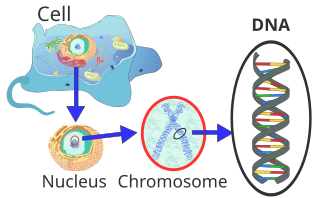Assalamualaikum and hi everyone... how are you all? I hope everyone will be fine as well... On Tuesday, before our class start, my classmates Aina, Amira and Adriana was presented about a microbe based on topics provided to them. The program is known as Pecha Kucha. Aina talked about Karlodinium veneficum, Amira talked about Haematococcus phuvalis, and Adriana talked about Clostridium noyvi. Later on, Dr. Suriana taught us about introduction of systematic prokaryotes again because on friday before mid sem break, many students are absent to the class. Dr. Suriana also taught us about small-subunit rRNA-based classification of prokaryotes. Molecular method for systematics which is molecular methods have been introduced, based on sequencing of genes that can be used as “evolutionary clocks,” i.e., that provide information on evolution in the prokaryote world, the principle of molecular taxonomy and of phylogenetic tree reconstruction is based on the concept that biological macromolecules can be used as evolutionary chronometers that measure evolutionary change and thanks to the availability of new techniques i.e sequencing of the genes encoding the small-subunit (16S) ribosomal RNA. Discovery of small-subunit ribosomal RNA sequence which is Carl Woese, in the late 1970s, hypothesized that ribosomes were ancient, conserved structure, better way to check is by looking at the genetic sequence. He studied various ribosomal RNAs: 5S, 16S and 23S, and finally chose 16S as molecule to study the evolution of life.
Properties of rRNA as phylogenetic marker is common ancestry, genetic stability, appropriate size and presence of independently evolving domains. The phylogenetic tree is do not provide an answer to the question of the nature of the universal ancestor of all life forms on Earth, do not infer from these trees whether the Archaea are a more ancient group than the Bacteria, or whether the prokaryotes formed an ancestral stage that led to the development of the primitive eukaryotic cell, mitochondria found in most eukaryotic cells have an ancestry that can be traced back to the Proteobacteria and origin of the chloroplasts in algae and higher plants, is within the Cyanobacteria. Differences between Bacteria and Archaea is the morphologically, the Archaea and the Bacteria are very similar, and also at the level of the cell ultrastructure, there are no obvious differences between typical representatives of both groups.
Differences is in the nucleotide sequences of ribosomal RNAs, structure of the cell wall, type of lipids in the membrane, the properties of the transcription mechanism of DNA to form RNA, the details of operation of the protein synthesis machinery of the ribosome, sensitivity to different antibiotics. Identification of prokaryote isolates not a simple procedure, not straightforward conventional way using the dichotomous identification keys, latest approach using polyphasic approach to taxonomy – morphological characters (cell shape and size, the Gram-reaction, cell inclusions, presence and nature of the surface layers, including extracellular capsules). Polyphasic approach morphological characters – (cell shape and size, the Gram-reaction, cell inclusions, presence and nature of the surface layers, including extracellular capsules), information on motility – (presence of flagella, their number and the way they are inserted into the cell, gliding movement), the mode of nutrition and energy generation, the cells’ relationship to molecular oxygen, temperature, pH, and tolerance towards and requirement for salt.
On Friday, before our class start, my classmates Subatra, Nadhirah and Harissa was presented about a microbe based on topics provided to them. The program is known as Pecha Kucha. Subatra talked about Ceriporiopsis subvermispora, Nadhirah talked about Penicillium chrysogenum, and Harissa talked about Agaricus bisporus. Later on, Dr. Suriana taught us about microbial genetic. The genome is all genetic instructions (genes) for development of cellular structures, metabolic functions, and their regulation (organization of which, when, where, and how much). Genes are located within chromosomes (linear or circular) or plasmids, as specific regions of DNA (or RNA for some viruses). Gene a certain segment of DNA that contains the necessary code to make a protein or RNA molecule.





No comments:
Post a Comment